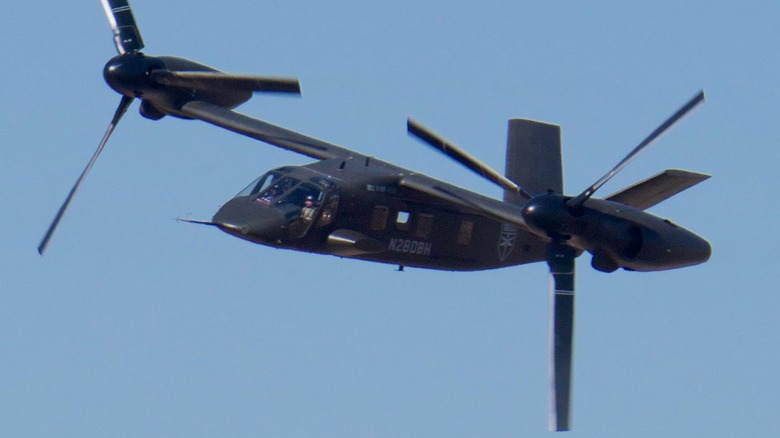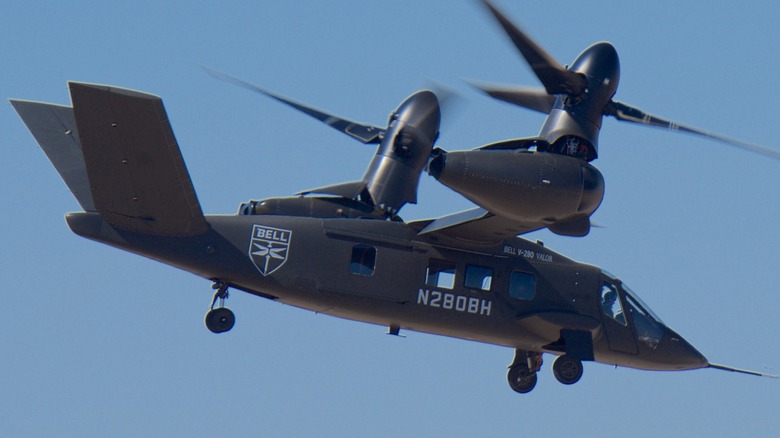Why The US Army's New Helicopter Is Expected To Be So Revolutionary
The United States Army has a massive fleet of helicopters, dwarfing most militaries around the world. The workhorse chopper used by the Army is the Sikorsky UH-60 Black Hawk, which has been in service since 1978. The Black Hawk is a robust helicopter that has been modified to fit a variety of uses and missions. Unfortunately, it's nearing the end of its service life for the Army, which is seeking a replacement.
The service has been looking for a new vehicle for years, using the U.S. Army's Future Vertical Lift (FVL) and the Future Long-Range Assault Aircraft (FLRAA) programs to identify a potential successor. The FVL program resulted in the development of the Bell MV-75, formerly known as the V-280 Valor. The new helicopter has a revolutionary tiltrotor design, which allows the aircraft to operate as both a helicopter and a fixed-wing plane. It can take off and land like a helicopter, but after tilting its rotors forward, it becomes a faster, more agile aircraft. This makes it capable of entering and leaving enemy airspace much faster than a traditional chopper.
Although the Army hasn't used this design on an aircraft before, tiltrotor aircraft have technically been around since the Bell XV-3 in 1955. The impressive Bell Boeing V-22 Osprey is also a tiltrotor aircraft, but it is used by the U.S. Marines, Air Force, and Navy — not the Army. Adopting a replacement for the heavily used UH-60 with a tiltrotor design indicates that the branch is looking to change how it moves into and out of battle spaces.
The Bell MV-75 will revolutionize the Army's aerial capabilities
The Army is the master of helicopters within the U.S. military. While it's not the only service to operate them, it's the branch's primary means of aviation. Most of the time, attack helicopters like the hard-to-fly AH-64 Apache take all of the press, but the MV-75 might just upstage its predecesor. The Army officially chose the MV-75 as its Black Hawk replacement in December 2022. If the program continues as expected, the first deliveries of the new tiltrotor aircraft could arrive as early as fiscal year 2031, or October 1, 2030.
As the program continues, additional flight tests of prototype aircraft will identify any areas that require changes. These could involve the complex mechanisms that make the tiltrotor function during flight, its landing gear, or any component of the MV-75. The prototype is powered by the Rolls-Royce AE 1107F engine, which is a variant of the AE 1107C engine used in the V-22. While Rolls-Royce tells SlashGear that the engines "very similar," the AE 1107F represents a more modern upgrade over the 1107C.
Because the program is still under development as of 2025, the details and specifications of its construction and capabilities remain up in the air. Thus far, however, the Army has revealed that the MV-75 should be able to transport up to 12 troops. It cruises at 322 mph, can reach a ceiling of 6,000 feet, and has a combat range of up to 1,956 miles. Additionally, the MV-75 will be semi-autonomous and can potentially fly without a crew.

